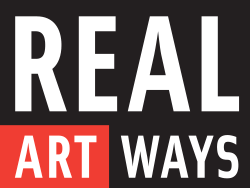Event
VISUAL AIDS: Meet Us Where We're At
Real Art Ways is proud to partner with Visual AIDS for Day With(out) Art 2025 by presenting Meet Us Where We’re At, a program of six videos that forefront the experiences of drug users and harm reduction practices as they intersect with the ongoing HIV crisis.
This is screening for one day only, on Monday, December 1, in our video gallery. The videos will loop between 1-9 pm.
Meet Us Where We’re At features newly commissioned videos by Kenneth Idongesit Usoro (Nigeria), Hoàng Thái Anh (Vietnam), Gustavo Vinagre & Vinicius Couto (Brazil/Portugal), Camilo Tapia Flores (Chile/Brazil), Camila Flores-Fernández (Peru/Germany), and José Luis Cortés (Puerto Rico).
These videos journey across a range of spaces, revealing the complexity of drug use. Several videos document the visible world of drugs—a harm reduction program in a Berlin park, a night out during Rio’s Carnival—while others reveal private, often hidden spaces where safety is found: bedrooms, underground clinics, and moments of connection between lovers.
Meet Us Where We’re At speaks not only to the variety of physical locations where contemporary harm reduction is practiced, but also to a broader shift: centering drug users as authors of their own experiences. Rooted in the philosophy of meeting people at their personal reality without judgment, the program affirms the full context of drug use—its pleasures, its risks, and its role in how people survive, care, and connect.
Harm reduction has long been central to the AIDS movement through practices like needle exchange and safe injection sites, and people who use drugs have been affected by HIV since the earliest days of the epidemic. This program brings their perspectives to the forefront, amplifying the voices of drug users as storytellers, cultural producers, and essential participants in the global response to HIV.
As this is a program centering harm reduction, it will contain depictions of sexual activity and drug use.
—
Kenneth Idongesit Usoro, Voices of Resilience
Voices of Resilience follows the lives of queer individuals and drug users living with HIV in Nigeria. Through personal interviews and experimental visual storytelling, the film shows the protagonists’ worlds as they seek out underground harm reduction services.
Hoàng Thái Anh, The Sisters’ Journey
Through a documentary style, The Sisters’ Journey explores the daily life of a transgender woman in Vietnam using drugs. The film delves into her fear of stigma, struggles she faces, and the vital role of harm reduction services and healthcare available to her.
Gustavo Vinagre and Vinicius Couto, chempassion
In the magical realist film, chempassion, a gay man reminisces about his orgy days and chem sex, contemplating what the future holds for himself and his close relationships.
Camilo Tapia Flores, Realce (Highlight)
Realce is a documentary short following two HIV-positive friends, DJ Deseo and porn actor Fernando Brutto, during one of their performances at Rio de Janeiro’s Carnival. The duo move through the streets of Rio and Carnival “blocos,” sharing their reflections on friendship, undetectability, their relationship with sex, and drug use within their own community.
Camila Flores-Fernández, Ghost in the Park
Ghost in the Park traces the narratives of the community of Görlitzer Park, an area in Berlin known for public drug use and trade. Highlighting “drug consumption buses” that promote safer use and aim to reduce HIV transmission among drug users, the space of the bus is taken as an axis through which the experiences and feelings of the community around the park are amplified.
José Luis Cortés, ¿Por qué tanto dolor? (Why so much pain?)
Instead of asking, “Why so much meth in the gay community?,” Cortés’s experimental film provokes the deeper question, “Why so much pain?” The film delves into the emotional and social wounds that fuel addiction and risk-taking behaviors.
—
Visual AIDS is a New York-based non-profit that utilizes art to fight AIDS by provoking dialogue, supporting HIV+ artists, and preserving a legacy, because AIDS is not over.


